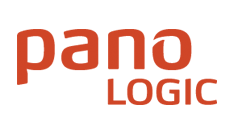
Virtual Network Computing (VNC) is a graphical desktop-sharing system that uses the Remote Frame Buffer protocol (RFB) to remotely control another computer. It transmits the keyboard and mouse input from one computer to another, relaying the graphical-screen updates, over a network.
RealVNC is a company that provides remote access software. The software consists of a server and client application for the Virtual Network Computing (VNC) protocol to control another computer's screen remotely.
Remote Desktop Protocol (RDP) is a proprietary protocol developed by Microsoft which provides a user with a graphical interface to connect to another computer over a network connection. The user employs RDP client software for this purpose, while the other computer must run RDP server software.
A remote access service (RAS) is any combination of hardware and software to enable the remote access tools or information that typically reside on a network of IT devices.
Remote administration refers to any method of controlling a computer from a remote location. Software that allows remote administration is becoming increasingly common and is often used when it is difficult or impractical to be physically near a system in order to use it. A remote location may refer to a computer in the next room or one on the other side of the world. It may also refer to both legal and illegal remote administration.

LogMeIn Hamachi is a virtual private network (VPN) application developed and released in 2004 by Alex Pankratov. It is capable of establishing direct links between computers that are behind network address translation ("NAT") firewalls without requiring reconfiguration ; in other words, it establishes a connection over the Internet that emulates the connection that would exist if the computers were connected over a local area network ("LAN").
Timbuktu is a discontinued remote control software product originally developed by WOS Datasystems. Remote control software allows a user to control another computer across the local network or the Internet, viewing its screen and using its keyboard and mouse as though sitting in front of it. Timbuktu is compatible with computers running both Mac OS X and Windows.
Desktop virtualization is a software technology that separates the desktop environment and associated application software from the physical client device that is used to access it.

In computing, the term remote desktop refers to a software- or operating system feature that allows a personal computer's desktop environment to be run remotely off of one system, while being displayed on a separate client device. Remote desktop applications have varying features. Some allow attaching to an existing user's session and "remote controlling", either displaying the remote control session or blanking the screen. Taking over a desktop remotely is a form of remote administration.
This page is a comparison of notable remote desktop software available for various platforms.
Remote Desktop Services (RDS), known as Terminal Services in Windows Server 2008 and earlier, is one of the components of Microsoft Windows that allow a user to initiate and control an interactive session on a remote computer or virtual machine over a network connection. RDS was first released in 1998 as Terminal Server in Windows NT 4.0 Terminal Server Edition, a stand-alone edition of Windows NT 4.0 Server that allowed users to log in remotely. Starting with Windows 2000, it was integrated under the name of Terminal Services as an optional component in the server editions of the Windows NT family of operating systems, receiving updates and improvements with each version of Windows. Terminal Services were then renamed to Remote Desktop Services with Windows Server 2008 R2 in 2009.

Pano Logic was a manufacturer of devices which present virtual desktops to the end user with no local processing power. They describe this concept as "zero client". This is perceived as offering benefits in end-user support and in power provision to desks. OEM versions have been included in displays from some vendors, allowing a single unit to be deployed. The company failed in October 2012. In March 2013, Propalms announced they had acquired the rights to support Panologic customers, and will "help transition the customer base to a new platform".
A hosted desktop is a product set within the larger cloud-computing sphere generally delivered using a combination of technologies including hardware virtualization and some form of remote connection software, Citrix XenApp or Microsoft Remote Desktop Services being two of the most common. Processing takes place within the provider's datacentre environment with traffic between the datacentre and the client being primarily display updates, mouse movements and keyboard activity.
In computing, SPICE is a remote-display system built for virtual environments which allows users to view a computing "desktop" environment – not only on its computer-server machine, but also from anywhere on the Internet – using a wide variety of machine architectures.
ConnectWise Control is a self-hosted remote desktop software application owned by ConnectWise Inc., a software developer based in Tampa, Florida, United States. It was originally developed by Elsinore Technologies in 2008 under the name ScreenConnect.

Chrome Remote Desktop is a remote desktop software tool, developed by Google, that allows a user to remotely control another computer's desktop through a proprietary protocol also developed by Google, internally called Chromoting. The protocol transmits the keyboard and mouse events from the client to the server, relaying the graphical screen updates back in the other direction over a computer network. This feature therefore consists of a server component for the host computer, and a client component on the computer accessing the remote server. Note that Chrome Remote Desktop uses a unique protocol, as opposed to using the common Remote Desktop Protocol.

Splashtop is a family of remote-desktop software and remote support software, developed by Splashtop Inc. Splashtop enables users to remotely access or remotely support computers from desktop and mobile devices. Splashtop enables remote computer access for businesses, IT support and help desks, MSPs, and educational institutions.

Remote Utilities is a remote desktop software that allows a user to remotely control another computer through a proprietary protocol and see the remote computer's desktop, operate its keyboard and mouse.
Impero Connect former Netop Remote Control is a line of software for remote management, desktop sharing and support of various computer systems.






